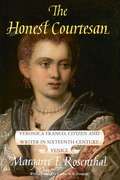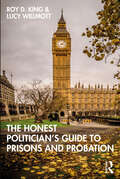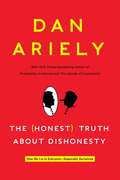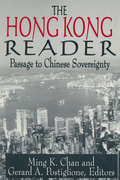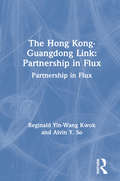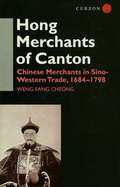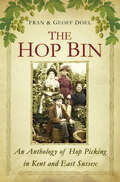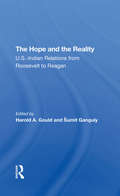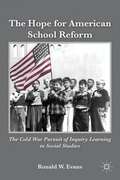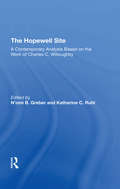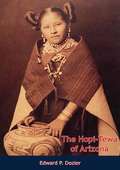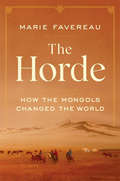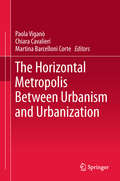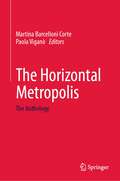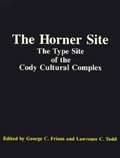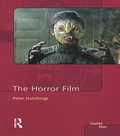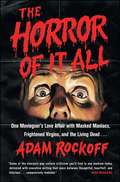- Table View
- List View
The Honest Courtesan: Veronica Franco, Citizen and Writer in Sixteenth-Century Venice (Women In Culture And Society Ser.)
by Margaret F. RosenthalThe Venetian courtesan has long captured the imagination as a female symbol of sexual license, elegance, beauty, and unruliness. What then to make of the cortigiana onesta—the honest courtesan who recast virtue as intellectual integrity and offered wit and refinement in return for patronage and a place in public life? Veronica Franco (1546-1591) was such a woman, a writer and citizen of Venice, whose published poems and familiar letters offer rich testimony to the complexity of the honest courtesan's position. Margaret F. Rosenthal draws a compelling portrait of Veronica Franco in her cultural social, and economic world. Rosenthal reveals in Franco's writing a passionate support of defenseless women, strong convictions about inequality, and, in the eroticized language of her epistolary verses, the seductive political nature of all poetic contests. It is Veronica Franco's insight into the power conflicts between men and women—and her awareness of the threat she posed to her male contemporaries—that makes her literary works and her dealings with Venetian intellectuals so pertinent today. Combining the resources of biography, history, literary theory, and cultural criticism, this sophisticated interdisciplinary work presents an eloquent and often moving account of one woman's life as an act of self-creation and as a complex response to social forces and cultural conditions. "A book . . . pleasurably redolent of Venice in the 16th-century. Rosenthal gives a vivid sense of a world of salons and coteries, of intricate networks of family and patronage, and of literary exchanges both intellectual and erotic."—Helen Hackett, Times Higher Education SupplementThe Honest Courtesan is the basis for the film Dangerous Beauty (1998) directed by Marshall Herskovitz. (The film was re-titled The Honest Courtesan for release in the UK and Europe in 1999.)
The Honest Politician’s Guide to Prisons and Probation
by Roy D. King Lucy WillmottThrough a comprehensive analysis of legislative and organisational changes and interviews with all the key players, The Honest Politician’s Guide to Prisons and Probation provides an authoritative account of the crisis which has gradually engulfed the prison and probation services since 1991. Setting out the nature and extent of the crisis, King and Willmott show how the Woolf agenda was overridden in a process of political churn, through explorations of the Conservative government until 1997, New Labour from 1997 to 2010 and the Coalition and Conservative governments since 2010. Uniquely, interviews with all surviving Home Secretaries and Justice Secretaries of the period include insightful and candid reflections upon their time in office, and how they saw the future. Views from both inside and outside the prisons and probation services are also explored, based on interviews with the Director Generals of the Prison Service and of the new National Probation Service, Chief Inspectors of Prisons and Probation and the four most recent Lord Chief Justices, including Lord Woolf himself. Concluding by drawing on this collective wisdom, King and Willmott set out what is needed for an effective and sustainable future. It is essential reading not just for those in Westminster, but also for practitioners in criminal justice, advocacy organisations, thinktanks and scholars and students in Criminology, Criminal Justice, British Politics and Public Policy.
The Honest Truth About Dishonesty: How We Lie to Everyone--Especially Ourselves (Ebook Bundle Ser.)
by Dan ArielyThe New York Times bestselling author of Predictably Irrational and The Upside of Irrationality returns with thought-provoking work to challenge our preconceptions about dishonesty and urge us to take an honest look at ourselves. Does the chance of getting caught affect how likely we are to cheat?How do companies pave the way for dishonesty?Does collaboration make us more honest or less so?Does religion improve our honesty?Most of us think of ourselves as honest, but, in fact, we all cheat. From Washington to Wall Street, the classroom to the workplace, unethical behavior is everywhere. None of us is immune, whether its the white lie to head off trouble or padding our expense reports. In The (Honest) Truth About Dishonesty, award-winning, bestselling author Dan Ariely turns his unique insight and innovative research to the question of dishonesty. Generally, we assume that cheating, like most other decisions, is based on a rational cost-benefit analysis. But Ariely argues, and then demonstrates, that its actually the irrational forces that we dont take into account that often determine whether we behave ethically or not. For every Enron or political bribe, there are countless puffed resumes, hidden commissions, and knockoff purses. In The (Honest) Truth About Dishonesty, Ariely shows why some things are easier to lie about; how getting caught matters less than we think; and how business practices pave the way for unethical behavior, both intentionally and unintentionally. Ariely explores how unethical behavior works in the personal, professional, and political worlds, and how it affects all of us, even as we think of ourselves as having high moral standards. But all is not lost. Ariely also identifies what keeps us honest, pointing the way for achieving higher ethics in our everyday lives. With compelling personal and academic findings, The (Honest) Truth About Dishonesty will change the way we see ourselves, our actions, and others.
The Honest Truth about Dishonesty: How We Lie to Everyone - Especially Ourselves
by Dan ArielyDan Ariely, behavioral economist and the New York Times bestselling author of The Upside of Irrationality and Predictably Irrational, examines the contradictory forces that drive us to cheat and keep us honest, in this groundbreaking look at the way we behave: The (Honest) Truth About Dishonesty. From ticket-fixing in our police departments to test-score scandals in our schools, from our elected leaders' extra-marital affairs to the Ponzi schemes undermining our economy, cheating and dishonesty are ubiquitous parts of our national news cycle-and inescapable parts of the human condition. Drawing on original experiments and research, in the vein of Freakonomics, The Tipping Point, and Survival of the Sickest, Ariely reveals-honestly-what motivates these irrational, but entirely human, behaviors.
The Hong Kong Diaries
by Chris PattenThe diaries of the last British Governor of Hong Kong, published on the 25th anniversary of the handoverIn June 1992 Chris Patten went to Hong Kong as the last British governor, to try to prepare it not (as other British colonies over the decades) for independence, but for handing back in 1997 to the Chinese, from whom most of its territory had been leased 99 years previously. Over the next five years he kept this diary, which describes in detail how Hong Kong was run as a British colony and what happened as the handover approached. The book gives unprecedented insights into negotiating with the Chinese, about how the institutions of democracy in Hong Kong were (belatedly) strengthened and how Patten sought to ensure that a strong degree of self-government would continue after 1997. Unexpectedly, his opponents included not only the Chinese themselves, but some British businessmen and civil service mandarins upset by Patten's efforts, for whom political freedom and the rule of law in Hong Kong seemed less important than keeping on the right side of Beijing. The book concludes with an account of what has happened in Hong Kong since the handover, a powerful assessment of recent events and Patten's reflections on how to deal with China - then and now.
The Hong Kong Reader: Passage to Chinese Sovereignty
by Ming K. Chan Gerard A. PostiglioneThis paperback reader provides the student and general reader with easy access to the major issues of the Hong Kong transition crisis. Contributors include both editors, as well as Frank Ching, Berry F. Hsu, Reginald Yin-wang Kwok, Peter Kwong, Julian Y.M. Leung, Ronald Skeldon, Alvin Y. So, Yun-wing Sung, and James T.H. Tang - the majority of whom live and work in Hong Kong and experience the transition firsthand, personally and professionally.
The Hong Kong-Guangdong Link: Partnership in Flux (Hong Kong Becoming China Ser.)
by Alvin Y. So Reginald Yin-Wang KwokThis text focuses on the relationship of Hong Kong with the adjacent Chinese province Guangdong, the territories most directly involved in the 1997 transfer of Hong Kong to Chinese rule. The socio-economic, political and cultural impact of this crucial link and the implications for the future of both Hong Kong and China are studied. A multi-disciplinary approach is taken to examine the complexity of economic, political and cultural transformation of the Hong Kong-Guangdong link and this book presents a historical perspective to trace the long-term structural transformation. The dynamics of the integration process between the two territories is also explored.
The Hong Merchants of Canton: Chinese Merchants in Sino-Western Trade, 1684-1798 (Nias Monographs In Asian Studies #No. 70)
by Weng Eang CheongThis study eschews the uncritical acceptance of secondary sources that has characterized studies in this field, going back to and reinterpreting previously neglected primary sources, thereby enabling it to chart linkages between the European and Asian trades that have been regarded as parallel but unrelated (or at best competing) activities. In so doing, the work sheds new light on this crucial period.
The Honored Society: A Portrait of Italy's Most Powerful Mafia
by Petra ReskiIn the early hours of an August 2007 morning a gunfight broke out in an Italian restaurant in Duisburg, Germany; in less than five minutes over seventy shots were fired into the bodies of six men. Both the victims and the assassins were members of the 'Ndrangheta crime organization. Calabria's Mafia had brazenly shown its savage influence outside Italy for the first time.In The Honored Society award-winning investigative reporter Petra Reski reveals the Mafia menace lurking throughout the world- from espresso bars in Palermo to European halls of parliament to the corporate headquarters of enormous agricultural firms. In haunting and exquisite prose she explores the Byzantine structure of the 'Ndrangheta, Cosa Nostra and other mafia clans throughout Italy - the code they live by, the destruction they wreak, how they operate within the country and how they operate internationally. She shows how these syndicates dominate everything from nuclear waste disposal to hotel chains to the marijuana trade in Australia and cocaine trafficked throughout the world. Reski shows how figures such as Silvio Berlusconi were made by the Mafia, and how those who dared to defy its codes were broken. A searing portrait of the criminals who have come to control not only Italy but vast swathes of the globe, The Honored Society is a journalistic tour de force.
The Hoods: Crime and Punishment in Belfast
by Heather HamillA distinctive feature of the conflict in Northern Ireland over the past forty years has been the way Catholic and Protestant paramilitaries have policed their own communities. This has mainly involved the violent punishment of petty criminals involved in joyriding and other types of antisocial behavior. Between 1973 and 2007, more than 5,000 nonmilitary shootings and assaults were attributed to paramilitaries punishing their own people. But despite the risk of severe punishment, young petty offenders--known locally as "hoods"--continue to offend, creating a puzzle for the rational theory of criminal deterrence. Why do hoods behave in ways that invite violent punishment? In The Hoods, Heather Hamill explains why this informal system of policing and punishment developed and endured and why such harsh punishments as beatings, "kneecappings," and exile have not stopped hoods from offending. Drawing on a variety of sources, including interviews with perpetrators and victims of this violence, the book argues that the hoods' risky offending may amount to a game in which hoods gain prestige by displaying hard-to-fake signals of toughness to each other. Violent physical punishment feeds into this signaling game, increasing the hoods' status by proving that they have committed serious offenses and can "manfully" take punishment yet remained undeterred. A rare combination of frontline research and pioneering ideas, The Hoods has important implications for our fundamental understanding of crime and punishment.
The Hoover Dam (Reading Street)
by Scott ForesmanRead and comprehend two-syllable words, Identify common prefixes (such as pre-, un-, or re-) and suffixes (such as -able, -ad and -er), Correct mistakes made when reading out loud, Read books with two or more chapters, Understand the structure of stores (i.e. beginning, middle and end), Start selecting reading materials based on his/her own interests, Identify the "who," "what," "when," "where," "why" and "how" of the text.
The Hop Bin: An Anthology of Hop Picking in Kent and East Sussex
by Fran Doel Geoff DoelFor 400 years Kent was vividly associated with the cultivation of hops. The harvesting of the hop was done by an itinerant workforce drawn mainly from London’s east end, and gypsies coming from as far away as Ireland. Whole families were involved for women and children were allowed to pick on the fields, the little ones picking into umbrellas or boxes; men who had jobs came down at weekends. For the east enders it was an annual working holiday in the countryside. This book evokes the bygone world of hopping through a fascinating illustrated selection of tales, songs, anecdotes and social records covering 400 years of local history, featuring both the ‘rose-tinted’ image and the harsher reality of a distinctive aspect of Kentish life.
The Hope And The Reality: U.s.-indian Relations From Roosevelt To Reagan
by Sumit Ganguly Harold A GouldThis book charts the relationship between the evolving governments of independent India and concurrent US presidential administrations. It provides an in-depth analysis of the motivations, external constraints and ideological agendas that characterized Indian-US relations.
The Hope for American School Reform
by Ronald W. EvansThe Hope of American School Reform tells the story of the origins of the reform in science and math education. The book is drawn, in part, on new research from previously untapped archival sources. The aim of this work is to contribute to our understanding of a major effort to reform school curricula.
The Hope of the Country with a Large Population
by Xueyuan TianChina has the largest population in the world. However, according to the United Nations, India and China are expected to simultaneously reach a population of approximately 1. 38 billion by 2030, with India taking a slight lead. China will be all too happy to surrender its position as the country with the largest population. Where does this attitude come from? For China, this situation is symbolic of the solution to the excessive population and a milestone in the "Three-Stage" population development strategy, as well as the people's hope. In order to realize this hope, it firstly depends on the transformation from the previous high birth rate, high death rate, and low growth rate of population, to a high birth rate, low death rate, and high growth rate, and finally to a low birth rate, low death rate, and low growth rate. It also relies on the "post-demographic transition" to a low fertility level since the 1990s, and secondly, is closely related to the population change in the future. Therefore, in-depth studies on population and the development of population, resources, environment, economy, and society should be conducted on the basis of fresh experiences and theories from the international community, in order to move forward with the times to promote the solution to the population problem and realize the dream of rejuvenating the Chinese nation. As a result, population change is linked to this great rejuvenation, as the great rejuvenation requires the population change and, in turn, the population change facilitates the great rejuvenation.
The Hopewell Site: A Contemporary Analysis Based On The Work Of Charles C. Willoughby
by N'omi Greber Katharine C RuhlThis book is about Charles Clark Willoughby's studies on the collection of artifacts and field records from the 1891–1892 excavations at the Hopewell Site that were included in the Field Museum. The engineering achievements seen in the geometric earthworks reflect social energy and commitment.
The Hopi-Tewa of Arizona
by Edward P. DozierTEWA VILLAGE, the Tewa-speaking community in northern Arizona, is the easternmost pueblo on the Hopi Reservation. It is one of three pueblos on First Mesa; the other two communities are Shoshonean Hopi in speech and culture. Although the inhabitants of Tewa Village speak another language and are set off culturally from the Hopi people, nothing about the outward appearance of the pueblo suggests this separatist quality. Tewa Village, in village plan, in architectural features of the houses, and in dress and material possessions of its inhabitants, appears to be a typical Hopi pueblo. Even in the physical appearance of the Hopi-Tewa no difference between them and the Hopi is apparent. Both belong to a fairly homogenous puebloid physical type. Culturally, however, the two peoples are quite distinct. The analysis of their differences is the main concern of this study.Although abundant literature exists on the Hopi, there is very little information regarding the Hopi-Tewa. Since Tewa Village is a comparatively recent community and its culture is manifestly different from that of the Hopi, those interested in the more colorful and ceremonially richer Hopi culture have bypassed it. The Hopi-Tewa, however, are an important group in themselves, and a study of them is needed.
The Horde: How the Mongols Changed the World
by Marie FavereauAn epic history of the Mongols as we have never seen them—not just conquerors but also city builders, diplomats, and supple economic thinkers who constructed one of the most influential empires in history. The Mongols are widely known for one thing: conquest. In the first comprehensive history of the Horde, the western portion of the Mongol empire that arose after the death of Chinggis Khan, Marie Favereau shows that the accomplishments of the Mongols extended far beyond war. For three hundred years, the Horde was no less a force in global development than Rome had been. It left behind a profound legacy in Europe, Russia, Central Asia, and the Middle East, palpable to this day. Favereau takes us inside one of the most powerful sources of cross-border integration in world history. The Horde was the central node in the Eurasian commercial boom of the thirteenth and fourteenth centuries and was a conduit for exchanges across thousands of miles. Its unique political regime—a complex power-sharing arrangement among the khan and the nobility—rewarded skillful administrators and diplomats and fostered an economic order that was mobile, organized, and innovative. From its capital at Sarai on the lower Volga River, the Horde provided a governance model for Russia, influenced social practice and state structure across Islamic cultures, disseminated sophisticated theories about the natural world, and introduced novel ideas of religious tolerance. The Horde is the eloquent, ambitious, and definitive portrait of an empire little understood and too readily dismissed. Challenging conceptions of nomads as peripheral to history, Favereau makes clear that we live in a world inherited from the Mongol moment.
The Horizontal Metropolis Between Urbanism and Urbanization
by Paola Viganò Chiara Cavalieri Martina Barcelloni CorteThis book provides an overview of the Horizontal Metropolis concept, and of the theoretical, methodological and political implications for the interdisciplinary field in which it operates. The book investigates the contemporary emergence of a new type of extended urbanity across regions, territories and continents, up to the global scale. Further, it explores the diffusion of contemporary urban conditions in an interdisciplinary and original manner by analyzing essential case studies. Offering extensive content on the Horizontal Metropolis concept, the book presents a range of approaches intended to transcend various inherited spatial ontologies: urban/rural, town/country, city/non-city, and society/nature. The book is intended for all readers interested in the emergence and development of new approaches in cultural theory, urban and design education, landscape urbanism and geography.
The Horizontal Metropolis: The Anthology
by Paola Viganò Martina Barcelloni CorteThis book draws together classic and contemporary texts on the “Horizontal Metropolis” concept. Taking an interdisciplinary approach, it explores various theoretical, methodological and political implications of the Horizontal Metropolis hypothesis. Assembling a series of textual and cartographic interventions, this book explores those that supersede inherited spatial ontologies (urban/rural, town/country, city/non-city, society/nature). It investigates the emergence of a new type of extended urbanity across regions, territories and continents up to the global scale through the reconstruction of a fundamental but neglected tradition. This book responds to the radical nature of the changes underway today, calling for a rethinking of the Western Metropolis idea and form along with the emergence of new urban paradigms. The Horizontal Metropolis concept represents an ambitious attempt to offer new instruction to take on this challenge at the global scale. The book is intended for a wide audience interested in the emergence and development of new approaches in urbanism, architecture, cultural theory, urban and design education, landscape urbanism and geography.
The Horizontal World: Growing Up Wild in The Middle of Nowhere
by Debra MarquartIn the tradition of John McPhee and Kathleen Norris, a wry, moving memoir about a family farm, a father, and a daughter, and how you can't not go home again.
The Horner Site: The Type Site of the Cody Cultural Complex (Studies In Archaeology Series)
by George C. Frison Lawrence C. ToddThe dust bowl days of the 1930s extended over a period of seven years and witnessed the removal and wind transport of much of the topsoil on the High Plains, especially in areas that were sandy and where the native sod had been disturbed. <P><P>As the topsoil blew away, human artifacts that were buried and protected by a thick, natural sod cover were exposed and many persons began to collect these specimens. The greatest interest centered around the lanceolate-shaped specimens of exceptional workmanship that were considered to be older than the more common notched varieties. <P><P>Professional archaeologists interested in the High Plains also became aware of this climatic event and the subsequent exposure of artifacts. Paleoindian or Early Man studies in North America had just realized a respectable status with the confirmation of New World man associated with extinct fauna at the Folsom site. <P><P>Radiocarbon dating was yet to be developed but some of the age estimates for Folsom were not too much in error. The unfluted, unnotched projectile points with superior technological attributes were suspected of being quite old, but just how old was still very much conjecture.
The Horror Film
by Peter HutchingsThe Horror Film is an in-depth exploration of one of the most consistently popular, but also most disreputable, of all the mainstream film genres. Since the early 1930s there has never been a time when horror films were not being produced in substantial numbers somewhere in the world and never a time when they were not being criticised, censored or banned. The Horror Film engages with the key issues raised by this most contentious of genres. It considers the reasons for horror's disreputability and seeks to explain why despite this horror has been so successful. Where precisely does the appeal of horror lie? An extended introductory chapter identifies what it is about horror that makes the genre so difficult to define. The chapter then maps out the historical development of the horror genre, paying particular attention to the international breadth and variety of horror production, with reference to films made in the United States, Britain, Italy, Spain and elsewhere. Subsequent chapters explore: The role of monsters, focusing on the vampire and the serial killer. The usefulness (and limitations) of psychological approaches to horror. The horror audience: what kind of people like horror (and what do other people think of them)? Gender, race and class in horror: how do horror films such as Bride of Frankenstein, The Texas Chainsaw Massacre and Blade relate to the social and political realities within which they are produced? Sound and horror: in what ways has sound contributed to the development of horror? Performance in horror: how have performers conveyed fear and terror throughout horror's history? 1970s horror: was this the golden age of horror production? Slashers and post-slashers: from Halloween to Scream and beyond. The Horror Film throws new light on some well-known horror films but also introduces the reader to examples of noteworthy but more obscure horror work. A final section provides a guide to further reading and an extensive bibliography. Accessibly written, The Horror Film is a lively and informative account of the genre that will appeal to students of cinema, film teachers and researchers, and horror lovers everywhere.
The Horror in Hindi Cinema: Between the Mythic and the Monstrous
by Meraj Ahmed MubarkiThe book offers a lively and detailed analysis of the ideological subtext of Hindi Horror cinema. It unearths its codes and conventions, its relationship to spectatorship, the genre’s conjunctions and departures from Hollywood, and the unique features of Hindi horror. It posits the Hindi horror genre as a project of / for the ‘nation’ in the making.Analysing films from Mahal (1948) to Bhediya (2022), this book uncovers narrative strategies, frames unique approaches of investigation, and reviews the transformation taking place within the genre. It argues that Hindi horror cinema lies at the intersection of myths, competing ideologies, dominant socio-religious thoughts revealing three major strands of narrative constructs, each corresponding to the way the nation has been imagined at different times in post-colonial India. It establishes a theoretical framework of Hindi horror cinema, and demonstrates for the first time how this genre, with its subsets, provides a means to contemplate the nation.This volume will be useful to students, researchers and faculty members working in mass communication, journalism, political science, film studies, political sociology, gender / women studies, Culture studies and post-colonial Indian politics. It will also be an invaluable and interesting reading for those interested in South Asian popular culture studies.
The Horror of It All
by Adam RockoffPop culture history meets blood-soaked memoir as a horror film aficionado and screenwriter recalls a life spent watching blockbuster slasher films, cult classics, and everything in between. Horror films have simultaneously captivated and terrified audiences for generations, racking up billions of dollars at the box office and infusing our nightmares with unrelenting zombies, chainsaw-wielding madmen, and myriad incarnations of ghosts, ghouls, and the devil himself. Despite evolving modes of storytelling and the fluctuating popularity of other genres, horror endures. The Horror of It All is a memoir from the front lines of the industry that dissects (and occasionally defends) the hugely popular phenomenon of scary movies. Author Adam Rockoff traces the highs and lows of the horror genre through the lens of his own obsessive fandom, born in the aisles of his local video store and nurtured with a steady diet of cable trash. From Siskel and Ebert’s crusade against slasher films to horror’s Renaissance in the wake of Scream, Rockoff mines the rich history of the genre, braiding critical analysis with his own firsthand experiences. Be afraid. Be very afraid.
